
Battle of Stone River
"Battle of Stone River, Tenn. Decisive charge and capture of Byrne's Confederate battery by the Seventy-eighth…

Siege of Vicksburg
"Siege of Vicksburg- the fight in the crater of Fort Hill after the explosion, June 27th, 1863. Our…

Battle of Gettysburg
"Battle of Gettysburg, Cemetery Hill during the attack of the Confederates, Thursday evening, July 2nd,…
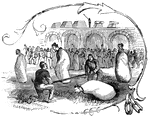
Hurdle Sack Race
"Federal soldiers participating in a hurdle sack race. Thanksgiving festivities at Fort Pulaski, Ga.,…
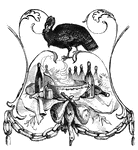
Thanksgiving Dinner
"Thanksgiving dinner. Thanksgiving festivities at Fort Pulaski, Ga., Thursday, November 27th, 1862.…
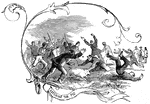
Catching the Pig
"Soldiers playing 'catch the pig.' Thanksgiving festivities at Fort Pulaski, Ga., Thursday, November…

Burlesque Dress Parade
"Soldiers participating in a burlesque dress parade. Thanksgiving festivities at Fort Pulaski, Ga.,…

Thanksgiving Ball
"Soldiers and women participating in a Thanksgiving Ball. Thanksgiving festivities at Fort Pulaski,…
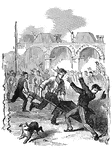
Wheelbarrow Race
"Soldiers aparticipating in a wheelbarrow race. Thanksgiving festivities at Fort Pulaski, Ga., Thursday,…
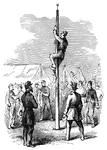
Climbing Pole
"Soldiers climbing up a greased pole. Thanksgiving festivities at Fort Pulaski, Ga., Thursday, November…

Garibaldi Guards
"Camp of the Garibaldi Guards, Colonel D'utassy, near Roche's Mills, Va., Potomac River in the distance.…

War Dance
"Camp life in the West. During one of the pauses in the active part of the Missouri campaign our special…
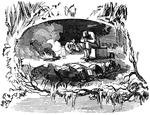
Midnight in the West
"Camp life in the West. During one of the pauses in the active part of the Missouri campaign our special…
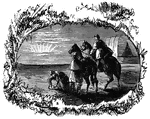
Sunrise in the West
"Camp life in the West. During one of the pauses in the active part of the Missouri campaign our special…
Hundred Mile Prairie
"Camp life in the West. During one of the pauses in the active part of the Missouri campaign our special…
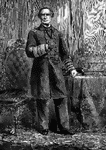
Admiral David G. Farragut
"Admiral Farragut, born at Campbell's Station, near Knoxville, Tenn., July 5th, 1801, died in Portsmouth,…

Ironclad Georgia
"Confederate ironclad ram Georgia lying off Fort Jackson, Savannah River, Ga., December 1862."—…
Fort Taylor
"Fort Taylor, Key West, Fla. Key West, the most western of the Pine Islands, is about sixty miles southwest…

Harrison's Landing
"Harrison's Landing, James River, Va. The commissariat depot and base of operations of General McClellan…

Battle of Chancellorsville
"Battle of Chancellorsville, Va., Friday, May 1st, 1863. We give a fine sketch of the point where the…
Hooker's Headquarters
"General Hooker's headquarters at Chancellorville, May 1st."— Frank Leslie, 1896

Battle of Chancellorsville
"Battle of Chancellorsville, Va. Attack on General Sedgwick's Corps. on Monday, May 4th, 1863, at 5…
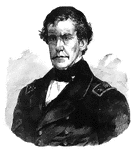
Rear Admiral Charles Wilkes
"Rear Admiral Wilkes, born in New York city, April 3rd, 1798, died in Washington, D. C., February 8th,…
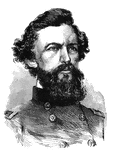
General Robert Patterson
"General Patterson, born in Cappagh, County Tyrone, Ireland, January 12th, 1792, died in Philadelphia,…
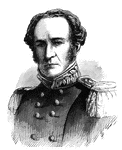
General George Stoneman
"General Stoneman, born in Busti, Chautauqua County, N. Y., August 8th, 1822, was graduated from the…

Explosion
"Explosion of 3,000 musket cartridges in a tent at Fort Totten, New Berne, N. C., the headquarters of…
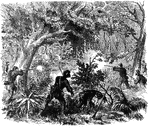
Advance to Vicksburg
"Skirmishing in the woods, on the advance to Vicksburg. Our artist presents a most beautiful scene,…
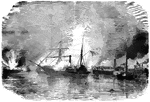
Harriet Lane
"Daring and desperate attack- surprise and capture of the United States gunboat Harriet Lane…

Banks Expedition
"The Banks Expedition- scene on the hurricane deck of the United States transport North Star-…

Butchering Cattle
"Butchering and dressing cattle for distribution to the Federal Army. The romance and reality of life…

Falmouth
"Federal troops marching back into Falmouth after the Battle of Chancellorsville."— Frank Leslie,…

Battle of Blue Ridge Pass
"Battle of Blue Ridge Pass, Sunday, September 14th, 1862- the first Federal victory in Maryland. On…

Anne
"Capture of the British steamer Anne laden with arms and munition of war for the Confederates,…
Commissariat Depot
"Commissariat Depot of the United States Army of the Rappahannock at Manassas, Va. Our sketch shows…

Siege of Vicksburg
"Siege of Vicksburg. Life in the trenches- bivouac of Leggett's Brigade- McPherson's Corps at the White…

Battle of Gettysburg
"Battle of Gettysburg- charge of the Confederates on Cemetery Hill, Thursday evening, July 2nd, 1863.…
!["The Plantation Police, or Patrol, was an institution peculiar to the Slave States. It was a semi-military organization, raised and supported by the planters, but recognized by the old State authorities. Their principal duty was to visit the various plantations and patrol the roads at night, arresting all [African Americans] and others not having proper passes. The war, the President's proclomation, and the actual possession of most of the State of Louisiana by the Federal authorities, rendered these patrols doubly rigorous. Some of the [African Americans] submitted reluctantly. The [African American] in the foreground is a speciman of this class. He seems to yield to the superior force of a tottering power, satisfied that his day is at hand; others show the obsequious, submissive stamp- the [African American] satisfied with his lot if he is clothed and fed."— Frank Leslie, 1896](https://etc.usf.edu/clipart/11600/11643/plant-police_11643_mth.gif)
Plantation Police
"The Plantation Police, or Patrol, was an institution peculiar to the Slave States. It was a semi-military…
!["A New Year's Day Contraband Ball at Vicksburg, Miss. The [African Americans] preserve all their African fondness for music and dancing, and in the modified form which they have assumed here have given rise to [African American] dancing and melodies in our theatres, a form of amusement which has enriched many."— Frank Leslie, 1896](https://etc.usf.edu/clipart/11600/11644/contra-ball_11644_mth.gif)
Contraband Ball
"A New Year's Day Contraband Ball at Vicksburg, Miss. The [African Americans] preserve all their African…

Paris
"Paris, capital of Bourbon County, situated on Stoner Creek, Ky., occupied by Morgan's Guerrillas in…

Kentucky Shore
"The Federal Army, under General Pope, landing on the Kentucky Shore, opposite New Madrid, April 1st,…
!["A detachment of the First South Carolina [African American] Federal Volunteers, under command of Colonel Beard, in the United States transport steamer <em>Darlington</em>, picking off Confederate sharpshooters concealed in the trees on the banks of the Sapelo River, Ga."— Frank Leslie, 1896](https://etc.usf.edu/clipart/11600/11647/aa-volunteer_11647_mth.gif)
African American Volunteers
"A detachment of the First South Carolina [African American] Federal Volunteers, under command of Colonel…
Fort Vulcan
"Fort Vulcan, Jones's Island, Savannah River, Ga.- one of the Federal batteries cutting off communication…

Fort Hindman
"The investment of Fort Hindman, Arkansas Post, Ark., by the Federal troops under General McClernand,…

Stafford's Store
"Going into camp at Stafford's store, Va. Third Brigade, Third Division, Sixth Corps, carrying off rails…
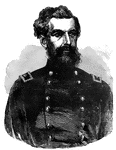
General Oliver O. Howard
"General Howard, born in Leeds, Me., November 8th, 1830, was graduated at Bowdin in 1850, and at the…
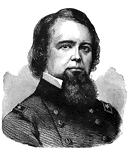
General John Pope
"General Pope, born in Louisville, Ky., March 16th, 1822, was graduated from the United States Military…
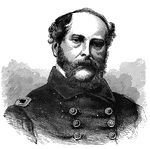
Rear Admiral John A. Winslow
"Rear Admiral Winslow, born in Wilmington, N. C., November 19th, 1811, died in Boston, Mass., September…

Distributing
"Distributing rations and appointing a knapsack guard before a reconnoissance near Warrentown, Va. Our…
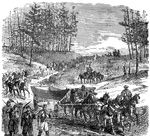
Pontoon Bridge
"The Pontoon bridge 'On The March'- the pontoon wagons on their way from Aquia Creek to the Rappahannock.…

Attack on Confederate Works
"Siege of Vicksburg, attack on the Confederate Works, May 22nd, 1863. Our sketch represents the terrible…

Siege of Vicksburg
"Siege of Vicksburg-the Twenty-third Indiana and Forty-fifth Illinois Regiments, Leggett's Brigade,…
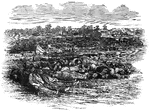
Battle of Corinth
"Battle of Corinth, Miss., October 4th, 1862. Scene in the roundabouts of Fort Robinett after the repulse…

Rifle Pits
"Siege of Vicksburg- sharpshooters in the rifle pits constructed by Captain Hickenlooper."— Frank…
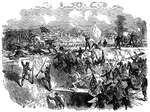
Arkansas Post
"The capture of Arkansas Post, Ark. General Stephen G. Burbridge, accompanied by his staff, planting…
Advance upon Charleston
"The advance upon Charleston, S. C.- entrance to the Stono River."— Frank Leslie, 1896

Confederate Batteries
"Fredericksburg, Va., and the Confederate batteries and pickets, as seen from Falmouth Heights, headquarters…


